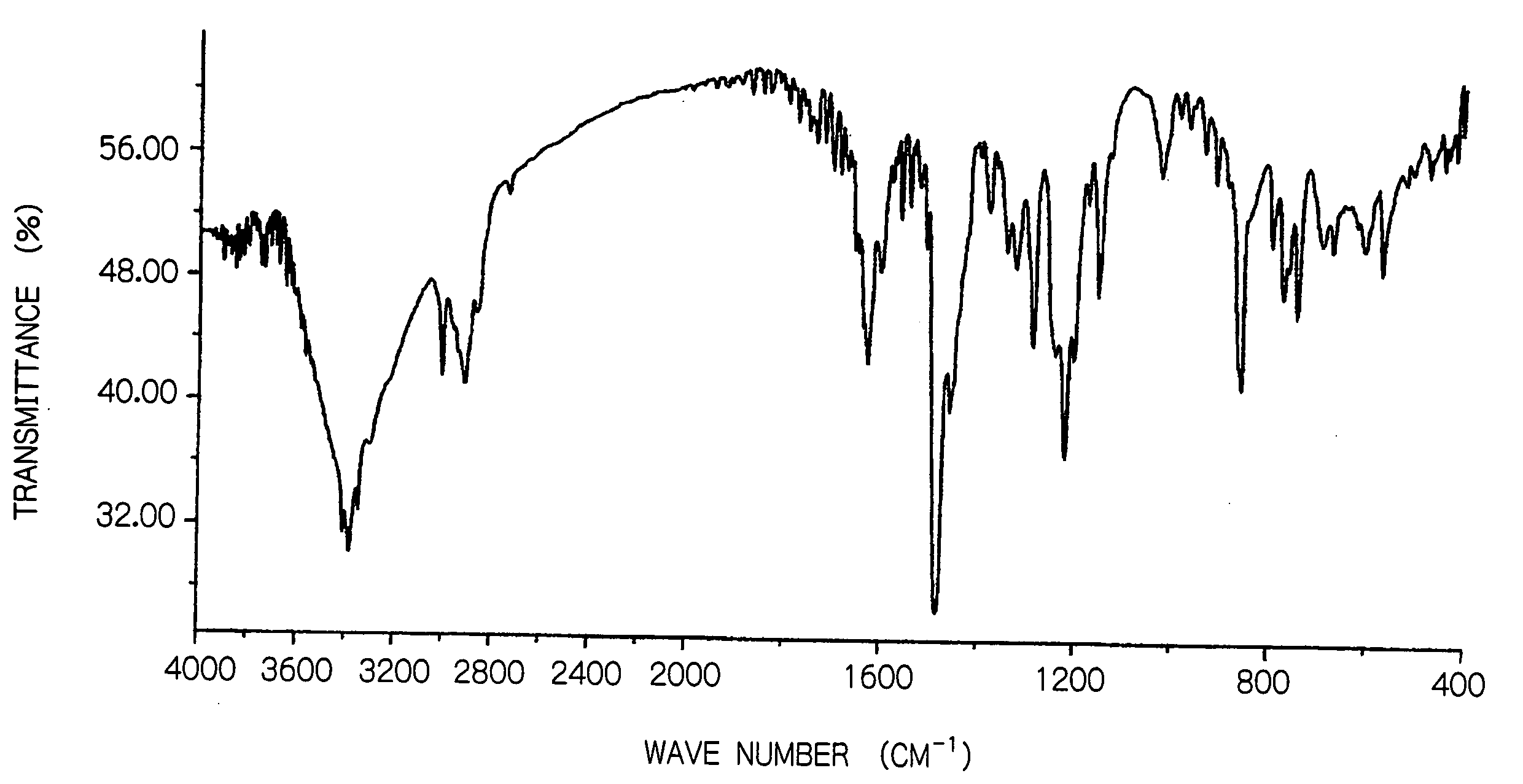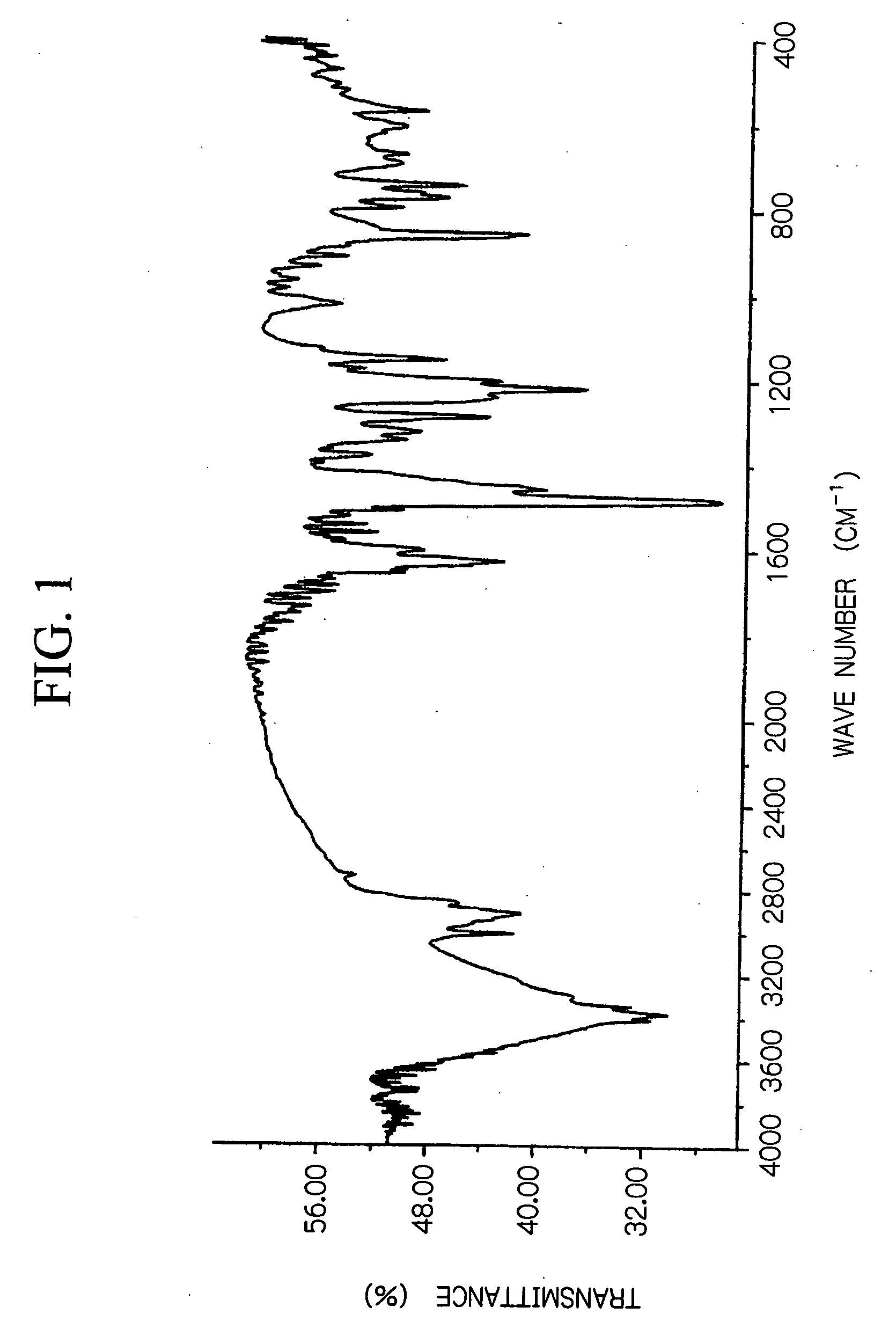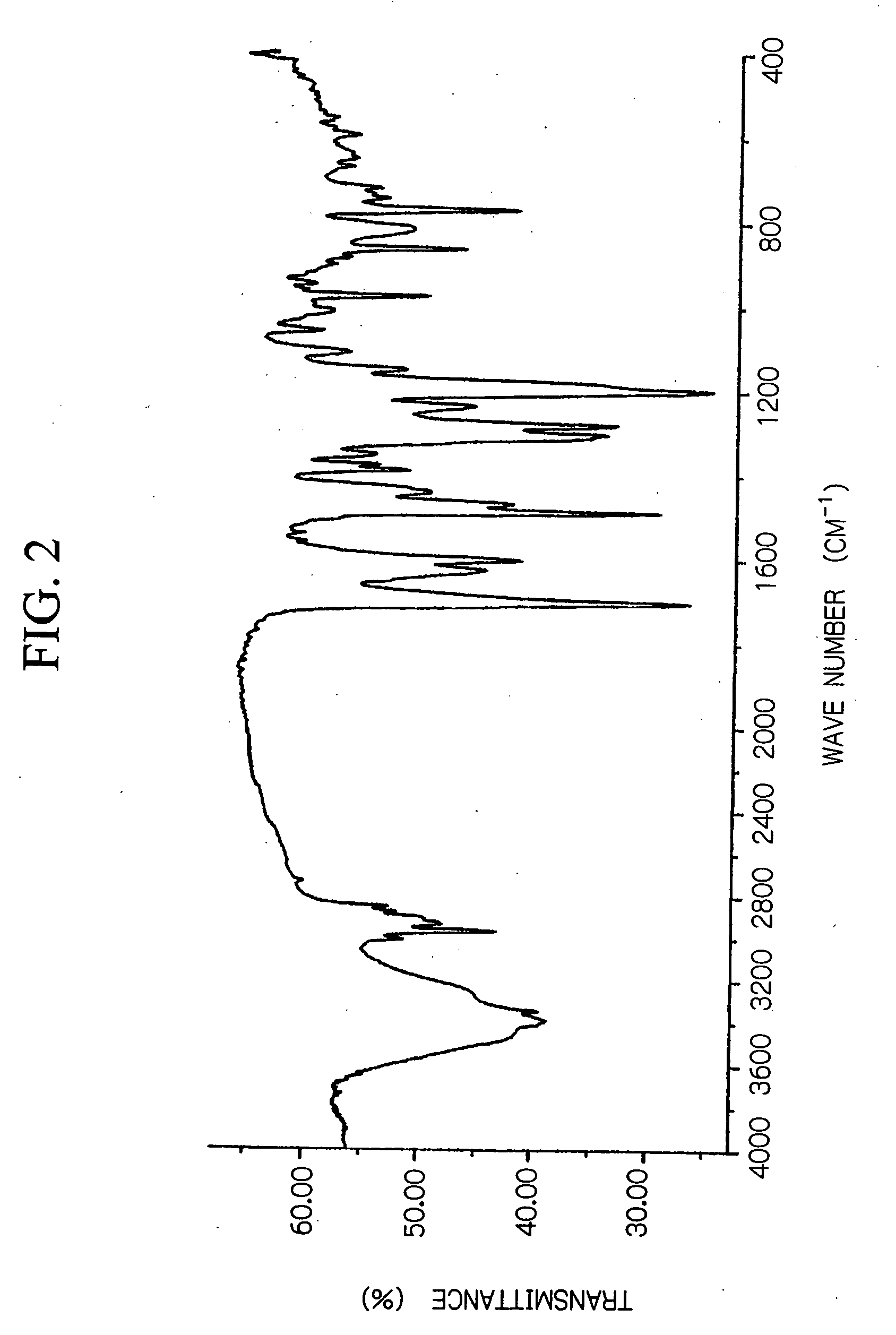Amino group containing phenol
- Summary
- Abstract
- Description
- Claims
- Application Information
AI Technical Summary
Benefits of technology
Problems solved by technology
Method used
Image
Examples
Example
Synthetic Example 1
(1) Synthesis of a Dimethylolphenol Derivative
[0061] 2,2′-methylenebis(4-methyl-6-hydroxymethylphenol) shown below was synthesized as a dimethylolphenol derivative, in the manner described below.
[0062] 162 g of p-cresol and 360 g of a 50% aqueous formalin solution were placed in a 2 L four neck flask equipped with a thermometer, a condenser, a stirrer and a dropping funnel. 200 g of a 30 mass % aqueous solution of NaOH was then added dropwise over a two hour period at a temperature of no more than 30° C. The temperature was then raised to 60° C. and the mixture was reacted for 4 hours, before the temperature was once again cooled to a temperature of no more than 30° C. 900 g of a 10 mass % aqueous acetic acid solution was then added dropwise to neutralize the reaction mixture, which precipitated a crude product. This crude product was filtered, washed with water (300 g of water was used for each wash, and four separate washing operations were performed), and ...
Example
Synthetic Example 2
(1) Synthesis of a Dimethylolphenol Derivative
[0065] 2,6-dihydroxymethyl-4-n-propylcarboxyphenol shown below was synthesized.
[0066] With the exception of altering the conditions described below, a product was obtained using the same method as described in the synthetic example 1. The product yield was 100 g of a white powder. [0067] Initial reactants: 90 g of propyl p-hydroxybenzoate and 120 g of a 50 mass % aqueous formalin solution. [0068] Dropwise addition conditions: 67 g of a 30 mass % aqueous solution of NaOH added over a two hour period at a temperature of no more than 40° C. [0069] Raised temperature reaction conditions: 3 hours at 75° C. [0070] Neutralization conditions: 540 g of a 10 mass % aqueous acetic acid solution.
(2) Synthesis of an Amino Group Containing Phenol Derivative
[0071] Using the product obtained above, 2,6-bis(3,5-dimethyl-4-aminobenzyl)-4-n-propylcarboxyphenol) shown below was synthesized as an amino group containing phenol deriv...
Example
Synthetic Example 3
(1) Synthesis of a Dimethylolphenol Derivative
[0075] 2,6-dihydroxymethyl-4-t-butylphenol shown below was synthesized as a dimethylolphenol derivative.
[0076] With the exception of altering the conditions described below, a product was obtained using the same method as described in the synthetic example 1. The product yield was 67 g of a reddish yellow powder. [0077] Initial reactants: 61 g of p-methoxyphenol and 162 g of a 37 mass % aqueous formalin solution. [0078] Dropwise addition conditions: 67 g of a 30 mass % aqueous solution of NaOH added over a two hour period at a temperature of no more than 40° C. [0079] Raised temperature reaction conditions: 2 hours at 60° C. [0080] Neutralization conditions: 540 g of a 10 mass % aqueous acetic acid solution.
(2) Synthesis of an Amino Group Containing Phenol Derivative
[0081] Using the product obtained above, 2,6-bis(3,5-dimethyl-4-aminobenzyl)-4-t-butylphenol) shown below was synthesized as an amino group contain...
PUM
| Property | Measurement | Unit |
|---|---|---|
| Temperature | aaaaa | aaaaa |
| Fraction | aaaaa | aaaaa |
| Photosensitivity | aaaaa | aaaaa |
Abstract
Description
Claims
Application Information
 Login to view more
Login to view more - R&D Engineer
- R&D Manager
- IP Professional
- Industry Leading Data Capabilities
- Powerful AI technology
- Patent DNA Extraction
Browse by: Latest US Patents, China's latest patents, Technical Efficacy Thesaurus, Application Domain, Technology Topic.
© 2024 PatSnap. All rights reserved.Legal|Privacy policy|Modern Slavery Act Transparency Statement|Sitemap



